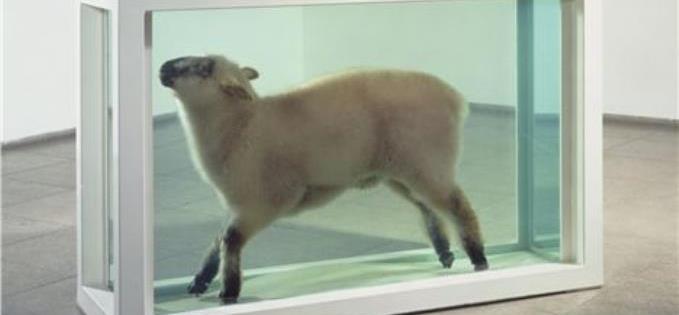I’VE BEEN a fan of Damien Hirst since I saw his work at the original Sensation show at the Royal Academy that propelled him to national infamy. His works – along with Tracy Emin – stood out in sea of mediocrities like Sarah Lucas.
This is a must see show, not just because Hirst is a world renowned artist, but because this is an intelligently curated retrospective of a challenging career
I’ve seen his work in New York, and in various Saatchi galleries, and this has convinced me he is a great artist/showman, but would his new show in his home town gallery do him justice?
The good news it has. This is a beautifully curated show cleverly tracing the ebbs and flows of a career that has never been less than controversial.
Wandering into the first gallery you are immediately hit by one of his trademark spot paintings that cemented his reputation as both artist and businessman. My partner remarked he really is ‘a brilliant graphic designer’ which is dead right. Works like ‘Controlled Substance: Key Painting’ (2004) knock pretenders like Peter Saville into a cocked hat.
The centre point of the show is a faithful recreation of part of the Pharmacy restaurant Hirst opened in Notting Hill at the zenith of his fame. This is a magnificent feat of curating bringing together for the first time since it closed, a dining area, complete with neon Pharmacy signs, menus, original ashtrays and chairs with chemical symbols on the back.
 Damien Hirst
Damien HirstIt even has the surreal sliver wallpaper complete with pictures of drugs coupled with a list of books and chapters of the Bible, and it is so realistic you can almost hear braying Metropolitan tones of the art sychophants.
In the other room there is a breathtaking – and hugely valuable – array of pieces that remind you that Hirst is - and remains - obsessed with life, death and the body. This is best typified by ‘Anatomy of an Angel’ (2008), main picture above, an angelic figure carved in Carrara marble with her innards on show contrasting internal and external beauty.
In contrast there's Mantra (2007) from Hirst’s butterfly phase where he (or his team) glued thousands of dead butterflies onto a circular board varnished with gloss paint. It is a genuinely moving elegy to short lives and mortality.
For many Hirst is perhaps known for his animals encased in formaldehyde and ‘Away from the Flock’ (1994) is a classic example of his unique take on death. Essentially it is a small sheep encased in formaldehyde, but strangely feels like the most obvious and dated piece in the whole exhibition.
But that is a minor quibble as this is a must see show, not just because Hirst is a world renowned artist, but because this is an intelligently curated retrospective of a challenging career. He may be the ultimate Marmite artist, but you’d be mug not to pop in and make up your own mind about a Leeds lad made good.
This show is free and runs until Sunday 30 October at Leeds Art Gallery.


